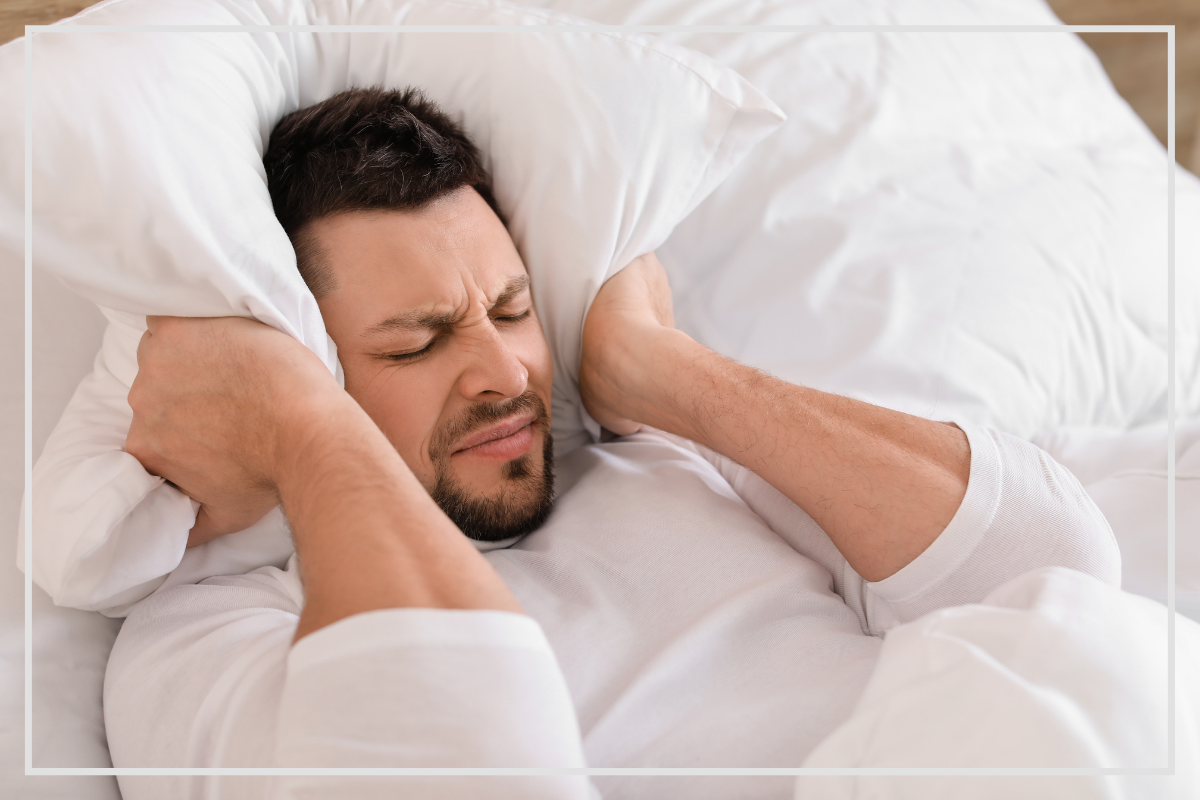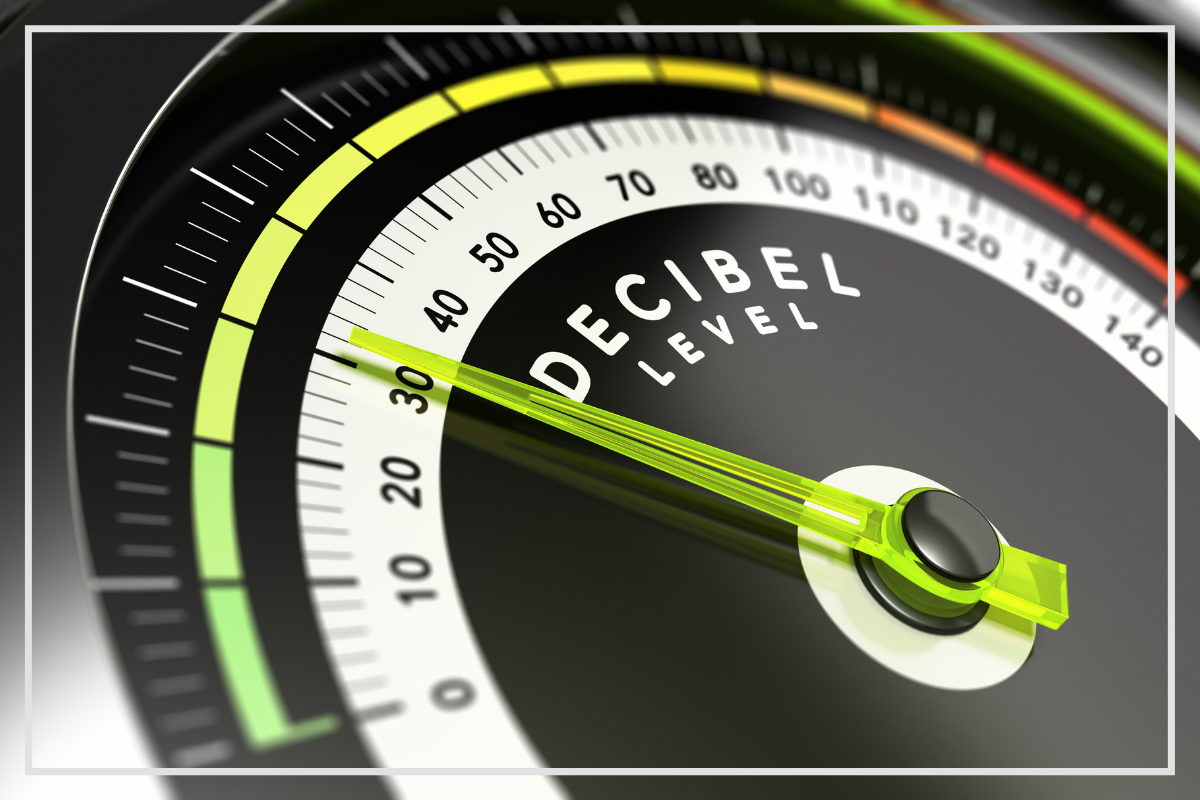- What Is 80 Decibels?
- How Loud Is 80 Decibels: Examples of the Sound in Everyday Life
- 80 dB Noise Compared to Other Volumes
3.1 55 Decibels
3.2 60 Decibels
3.3 90 Decibels - How Far Away Can This Sound Level Be Heard?
- Is 80 dB Safe for Your Hearing?
5.1 Safe Barrier
5.2 How Long Can You Listen to 80 dB?
5.3 How Long Can You Listen to 80 dB? - Measure dB with DecibelPro.App
Because the decibel scale can sometimes be confusing, understanding different levels of noise is easier when we look at everyday sounds. In this article, we’re taking a closer look at how loud is 80 decibels, and examples of this noise level to understand if exposure to 80 dB is safe for our hearing or not.
What Is 80 Decibels?
The decibel scale is used for measuring sounds that are hearable to the human ear. It runs from 0 dB (the threshold of hearing) up to 130 dB (the threshold of pain that can cause instant hearing loss).
80 decibels is a moderately high noise level, close to the limit of 85 dB considered by official organizations like NIOSH (National Institute for Occupational Safety and Health) and OSHA (Occupational Safety and Health Administration) to be the maximum TWA (time-weighted average) limit humans should be exposed to for periods exceeding 8 hours/day.
Exposure to noise levels above 85 dB is considered harmful for human hearing and hearing protection is recommended whenever sound levels exceed this limit.
How Loud Is 80 Decibels: Examples of the Sound in Everyday Life
80 decibels is fairly loud. It’s equivalent to the noise of a busy downtown street. Being loud, it is a noise level that may harm your hearing if you are exposed to it for longer periods (more than 8-10 hours/day).
There’s no better way to understand how loud 80 dB is than to take examples from everyday life. Be it things we come across every day or activities we do regularly, there are many sounds around us that reach this decibel level.

Here are the most common examples of 80 dB sounds:
· Busy road with heavy car traffic
· Traffic noise inside a car
· A noisy restaurant, hotel lobby, office, or public places like an airport or a train station
· Older (and louder) vacuum cleaners
· A window air conditioner
· A dishwasher
· A car wash
· A food blender or a garbage disposal
· A hairdryer
· A ringing telephone
· Loud alarm clock
· Welding equipment
As you can see, it’s not uncommon for everyday noise sources to go up to 80 dB. In fact, many of the electronic devices we regularly use reach 60-80 dB.
Because of this, it’s a good idea to use a sound level meter or a sound level meter app to monitor the noise you are exposed to daily if you want to prevent hearing damage from sustained exposure to loud sounds.
80 dB Noise Compared to Other Volumes
The decibel scale is logarithmic. It measures differences between 2 values progressively. So, while you may think that a 5 or 10-decibel difference is small, in fact, it is quite significant.
Each time a sound increases by 10 decibels, its intensity increases 10 times, and its perceived loudness increases 2 times.
Compared to other, more moderate dB levels, 80 decibels is considered fairly loud. If you compare it to the level of a normal conversation that is at about 60 dB, 80 dB is 100 times more intense and 4 times as loud.
55 Decibels
55 decibels is an average noise level, comparable to the noise level of a moderately quiet street in a residential neighborhood or a fairly quiet room. It is a safe level for human hearing and sustained exposure to this noise level is not considered harmful.
Compared to 55 dB, 80 decibels is over 100 times more intense and over 4 times louder.
60 Decibels
60 decibels is a moderate noise level. It’s about the average level of a conversation between two people speaking in a normal voice. Or the level of a heat pump outdoor unit.
It is considered safe for human hearing and there is no recommendation for limiting your exposure to this dB level if you are an adult. However, for babies, infants, and toddlers, this is the maximum recommended exposure limit.
Compared to 60 dB, 80 dB is 100 times more intense and 4 times as loud.
As you can see in the comparison decibel chart below, 60 decibels is half as loud as 70 decibels and considered fairly quiet. On the other hand, 80 dB is twice as loud as 70 Db and is considered to be potentially damaging if exposure exceeds 8 hours.

90 Decibels
90 decibels is a high noise level, equivalent to the noise generated by a leaf blower or the sound level of a concert. Compared to 80 dB, 90 dB is 10 times more intense and twice as loud. Whenever you are exposed to this noise level, you should wear hearing protection.
How Far Away Can This Sound Level Be Heard?
The answer to “How far away you can hear an 80 dB sound?” is not as straightforward as we may like. This is mostly because sound travels differently depending on weather conditions as well as whether or not it has any obstacles in its way.
How far away you can hear a sound of this level also depends on the sound’s frequency.
Here’s the full explanation to this:
Sound is made up of vibrations. It travels in waves. Sound can travel through air but also water or gas. As they travel, sound waves lose their intensity, and, therefore, the sound becomes muffled until it can no longer be heard.
As a general rule, if a sound is 80 dB at the source, its intensity will decrease by 6 dB each time the distance from the source doubles. Therefore, under normal conditions, you will probably be able to hear an 80 dB up to 100 feet or 30 meters.
Is 80 dB Safe for Your Hearing?
80 decibels is considered potentially harmful to your hearing. Especially if exposure exceeds 8-10 hours/day.
The maximum noise level you can be exposed to without having to worry about hearing damage or potential hearing loss is 70 decibels over a 24-hour period. 80 decibels is twice as loud as 70 dB and therefore considered potentially unsafe.

Safe Barrier
Loud noise levels, above 70 decibels can cause harm to your hearing, as well as stress, low productivity, and difficulties concentrating. The official recommendation is to wear hearing protection when noise levels are above 85 decibels.
In industrial environments, employers also need to implement additional hearing protection solutions such as sound-safe barriers that reduce noise pollution by absorbing and reflecting sound.
How Long Can You Listen to 80 dB?
According to the World Health Organization, you can safely be exposed to 80 dB noise, for instance, if you listen to music on your stereo system or headphones at this level, for up to 40 hours per week.
Is Hearing Loss Possible?
Prolonged exposure to noise levels of or above 80 decibels is potentially harmful to your hearing and may lead to hearing damage if it exceeds 40 hours/week.
Measure dB with DecibelPro.App
To check the decibel ratings of common sounds and monitor your daily exposure, you can easily download and use a decibel meter app like Decibel Pro on your iPad or iPhone. DecibelPro provides instant sound level readings, and also comes with an integrated HiFi spectrum analyzer, a hearing test, and a noise dosimeter.
Using it, you can check if noise levels in your home or workplace are acceptable and prevent exposure to harmful noise levels.
You can find DecibelPro in the AppStore, or click here to learn more about it.



